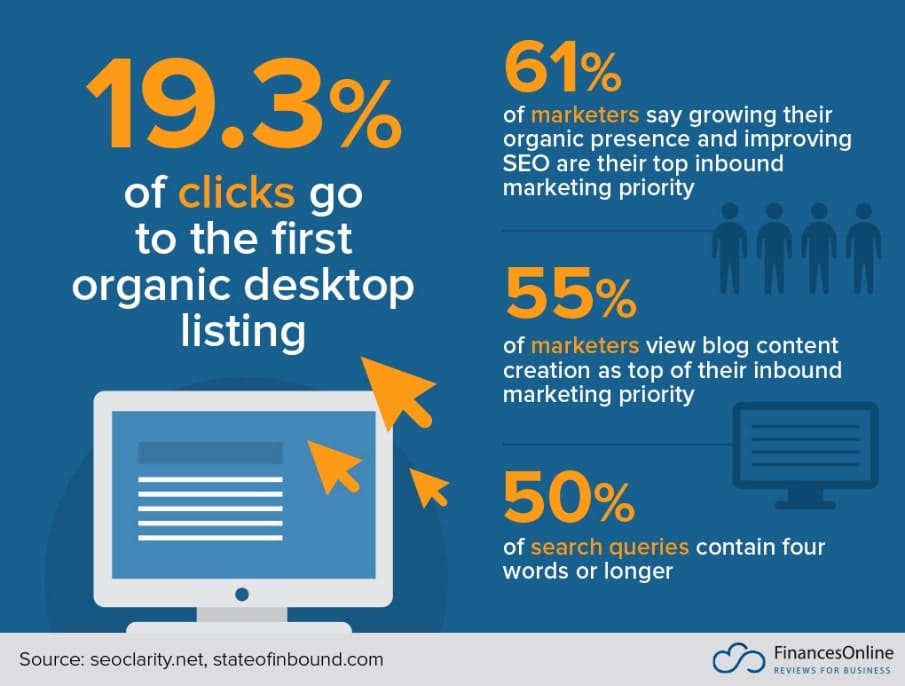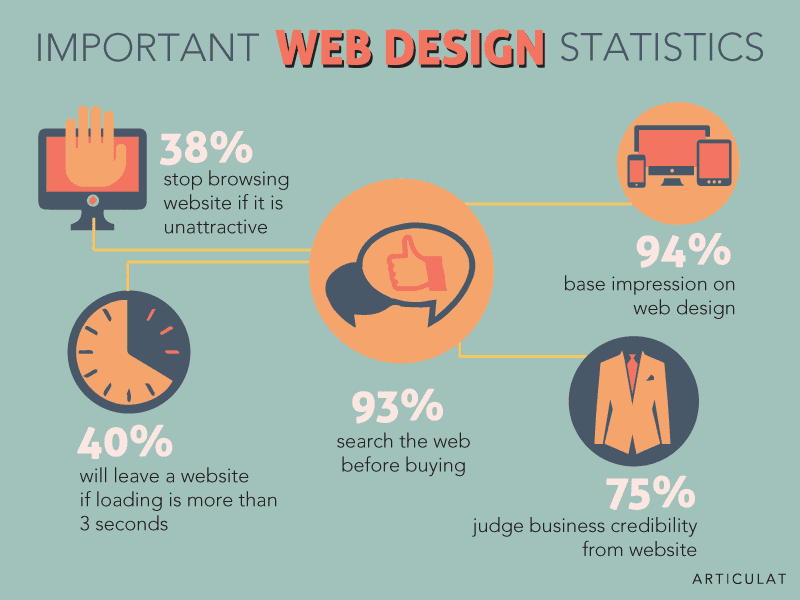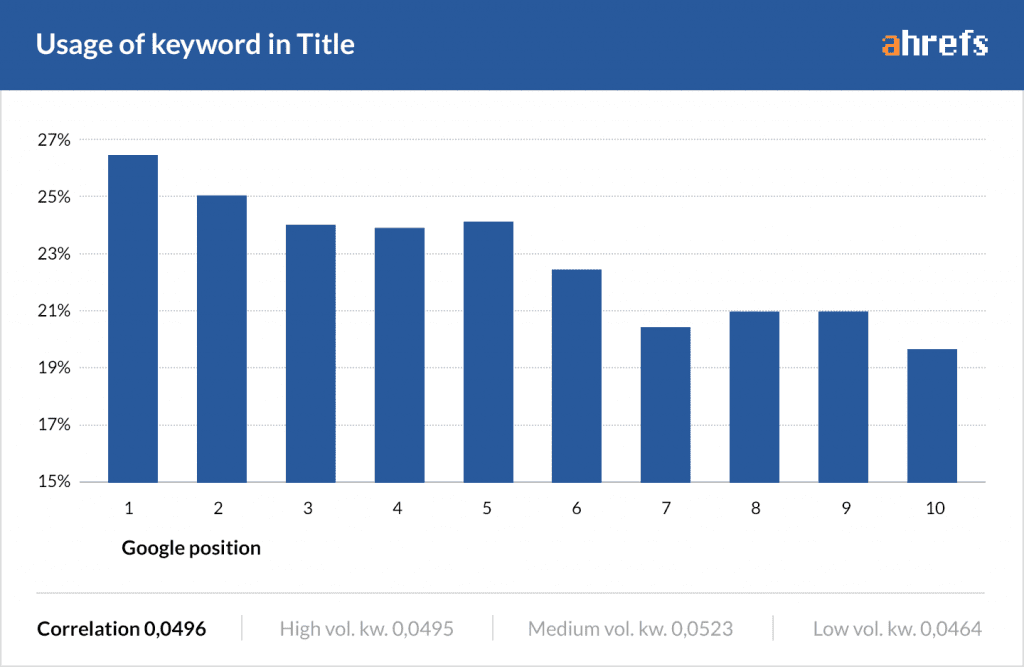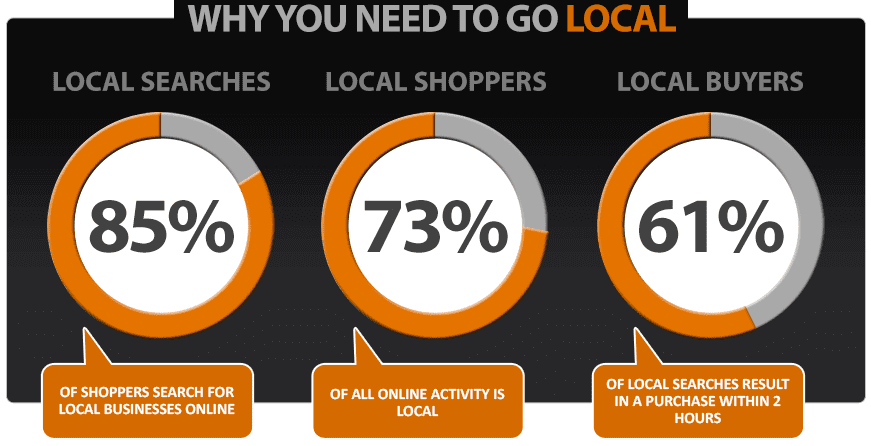The digital landscape has become intensely competitive in the past few years. While previously, it was enough to have a website and an online presence to get your business noticed, now doing so does not guarantee anything.
As per Hubspot, 75 percent of users don’t even scroll past the first page of search results. And considering that search engines drive ten times more traffic to a website than social media. According to Search Engine Land, it is safe to say that having a high ranking on search engine pages is a necessity.
You need to make an effort to ensure that your website is listed on top of search results and hence, get the required traffic to generate conversion and revenue. This is known as Search Engine Optimization. And this industry is thriving.

Image Source: https://financesonline.com/seo-statistics/
In fact, according to Forbes, by the end of 2020, businesses in the US alone will spend over $80 billion on the various SEO services available. If Crazy Egg is to be believed, SEO can boost conversion rates by 14.6 percent!
Here is how you can prepare your website for a winning SEO campaign.
1. Have An Effective Website Design
One of the first things that a visitor notices about your website are its aesthetics. You might have heard of the cliché, “First impressions are last impressions.”
According to TechJury, two out of three people tend to prefer aesthetically beautiful websites. Another research pinpoints that 46 percent of website visitors consider its design to be the ultimate criterion of credibility.

Image Source: https://www.littlebigreddot.com/businesses-invest-web-design/
With such consumer perceptions, it is essential that you first create an effective website design. Here are some elements it should include.
- Easy navigation: This ensures visitors don’t get confused about how to complete a purchase when on your website. Make the navigation as easy as possible to reduce the bounce rate.
- Clear identity, color theme, and a distinct logo: To create an effective and consistent brand image, have the same theme and logo on all your communications.
- High-quality graphics and image: Show your audience rather than just telling them about your quality. And images and videos are a great way to do so.
- Well-structured layout: Create a site map with a specific focus on products and services. Highlight the key selling points as well as the call to action.
- Readability: Have a contrast between text and background colors along with ample white space to make text readable.
- Attention-grabbing content: Create incredible niche content that resonates with your target audience. This will help boost your credibility.
By focusing on each of these structural elements, you can create a website that is helpful and relevant to visitors. And this is one of the things Google looks at when ranking your website.
Related: Top 7 Website Design Blunders to Avoid in 2020
2. Pay Attention to Your Mobile Website
According to Statista, there will be over 221 million mobile users by the end of 2020. Internet Live Stats claim that approximately 5.5 billion searches are done on Google daily. And 60 percent of these searches are made on mobile.
Even though, as per Green Geeks, 51 percent of consumers trust mobile-optimized sites, many businesses fail to give mobile websites the attention they deserve. As the consumption of mobile devices increases, here is how you can optimize your website for mobile and hence for mobile search results.
- Simplify mobile check-out: Reduce form fields and facilitate user experience as much as you can. For instance, rather than having users’ type dates, give an option of visual calendar instead.
- Call-to-action on every page: It is much harder to revert to a previous page on mobile than it is to do so on a webpage. To make it easy, add call-to-action and shopping carts on every page.
- Important content only: Only include content that is necessary for the completion of purchase. Cut anything that is extra.
As people are moving towards mobile as their primary devices, search engines are boosting mobile-optimized websites on top.
3. Generate Optimized Yet Relevant Content
According to eMarketer, over 60 percent of businesses generate at least one piece of content every day. Since Mckinsey dubs consistency as one of the most integral elements of customer satisfaction, merely creating content now and then is not enough. You must be consistent in your efforts.
When it comes to website content, apart from writing product descriptions, business overview, and introduction about the company, create a separate tab for blogs.
Having a blog increases the chances of gaining backlinks, which help in improving your rank. Also, it helps in establishing your business as an expert in the sector.
Companies like OptinMonster have used blogs to showcase their credibility to the world. The site features pieces on marketing strategies and case studies. This has allowed OptinMonster to generate a respectable amount of backlinks.
All in all, here are the different content you must have on your website:
- Clear introduction of who you are, your values and mission
- Contact information, including phone number and address
- Value proposition and unique selling points
- Product descriptions and specifications
- Review and testimonials from customers
Once you have created the right content, it is time to optimize it as well. This includes conducting thorough keyword research, finding long-tail keywords to add to your pillar content, including high-ranking relevant keyword in your pieces cohesively, and adding title tags and meta-descriptions.
Related: A Complete Guide to Creating Website Content That Wins Customers
4. Mention Your Differentiating Features Upfront
Most consumers check out various websites before deciding which brand to purchase from. In fact, many treat online platforms as a way to compare brands, upon which they later complete the purchase offline.
Assume the role of a facilitator and make the searching and picking process easy for your visitors. Do so by mentioning the differentiating factors of your brand as well as your products.
If you have a blog, you can compare your product with that of your competitors and illustrate how your offerings are better.
Amazon offers a comparison of products on its site. Now that it has entered mainstream production of goods, the continuation of such comparison sheets is an excellent example of this practice.
If you decide to have a comparison table on your website, have the following structure in your product reviews and comparison.
- Headline with a focus on the key benefits your brand offers. Make sure the line is pithy and attention-grabbing.
- Sub-headline with an explanation of how your key benefit translates into a solution for customers.
- Infographics and visuals for summarizing the main points, to ensure maximum readability
Content is in the front and center of a winning SEO campaign. Both promotional and organic content can help boost SERP. Don’t underestimate either of them!
5. Use Primary Keyword in Your Title Tag
According to the Zero Limit Web, over 67 percent of organic traffic falls on the first four links displayed on the search result. Hence, you cannot create a winning SEO campaign without effectively making use of keywords.
Apart from adding keywords into the body of the content on your website and blog, you must also work on your title tag.
What is a title tag?
A title tag refers to the page title that is reflected on Google. This will vary depending on the webpage that the search engine displays. Remember, your website has various pages, and a different one might pop up depending on what keywords a visitor uses.
For instance, people wishing to know the location of an online car buying store are likely to be shown the contact pages of websites rather than their homepage.
To ensure that each of your webpages has a respectable ranking on search engines, optimize each page’s title tag with the primary SEO keywords.

Image Source: https://ahrefs.com/blog/title-tag-seo/
However, don’t just add the keyword for the sake of optimization. Make sure that it is added cohesively into the title.
At the same time, the title must:
- Provide a snapshot of what the page includes
- Tell users what they should expect once they click on the link
- Be within 60 characters or Google will crop it, rendering it ineffective
- Not repeat the keyword multiple times since that will come under keyword stuffing and is a practice looked down upon by search engines
While you are at it, optimize your meta-description as well. Treat it like a sales pitch. The objective of your meta description should be to convince visitors to click on your site.
6. Conversion Should be Your Objective
In the corporate world, nothing is free. And that holds true for organic traffic as well! Since you must invest in implementing the right SEO strategies and campaign for your brand, you must have the right objective from the get-go!
The ultimate objective of any SEO campaign should be to convert visitors into customers. After all, according to Adobe, over 40 percent of marketers report that their conversion rates are less than 0.5 percent.
To boost your conversion rates, align your SEO campaign with your conversion goals. Begin by surveying current site visitors. For instance, if your cart abandonment rate is high, ask for their feedback about the purchasing process.
Use the data you gather from your surveys to alter your website design. Conduct an A/B test to guarantee that the pitfalls you have identified are truly statistically significant.
By having the right objective, you can create an SEO campaign that is driven towards success.
7. Have a Strong Social Media Presence
Many make the mistake of thinking that an effective SEO campaign is solely about optimizing your website. This is not the case. SEO pertains to much more than just your website. Instead, it is much more of a digital metric.
Apart from your website, you must simultaneously work on your social media presence as well. Build up your Facebook, Instagram, Twitter, and LinkedIn profile. Identify a primary social media platform. To do so, you must first know the demographics of your target audience and then see where they are most active.
You can also leverage your online following on your social media pages to promote content on your website. When you combine this with the blogging tactic, you can promote your website through your social media.
This can immensely help your SEO campaign.
8. Focus on Local SEO
Depending on the kind of business you are in, the significance of local SEO will vary. According to Hubspot, approximately 46 percent of Google searches look for local information. It is quite common for people to search for services near them or in their city.

Image Source: https://resultdrivenseo.com.au/local-seo-stats
To generate revenue, your website must be displayed on the right set of local keywords. This is where Local SEO comes in.
Local SEO can allow you to promote your business at the zero moment of truth. It extracts businesses through search engines and business directories to help boost your website’s local presence.
Here is how you can incorporate local SEO in your campaign:
- Set up your business directories listings properly. This includes Google My Business and Bing.
- Make sure that the address on your website is the same as that on the different directories.
- Add photos, descriptions, and images of your business.
- Claim and verify your listings
Apart from working on directories, optimize your website content by adding high ranking local keywords.
Let’s Sum It Up
Neither is SEO cheap nor simple, yet if you do it correctly, you can end up boosting organic traffic and hence your conversion rates. Creating a winning SEO campaign is not a clear cut formula. You must alter each step according to your business and your target audience. While it might be hectic, it surely is effective if done properly.
Here is a run-down of each step. Don’t miss any of them!
- Have an aesthetically appealing and functionally optimized website design
- Optimize your site for mobile users
- Create eye-catching and helpful content
- Highlight your USPs
- Optimize your title tag and meta description
- Focus on your conversion rates
- Amp up your social media game
- Don’t ignore your local audience
Focus on the right elements, and you are good to go. Do you think we are missing out on an important step for creating a winning SEO campaign? Let us know below!








